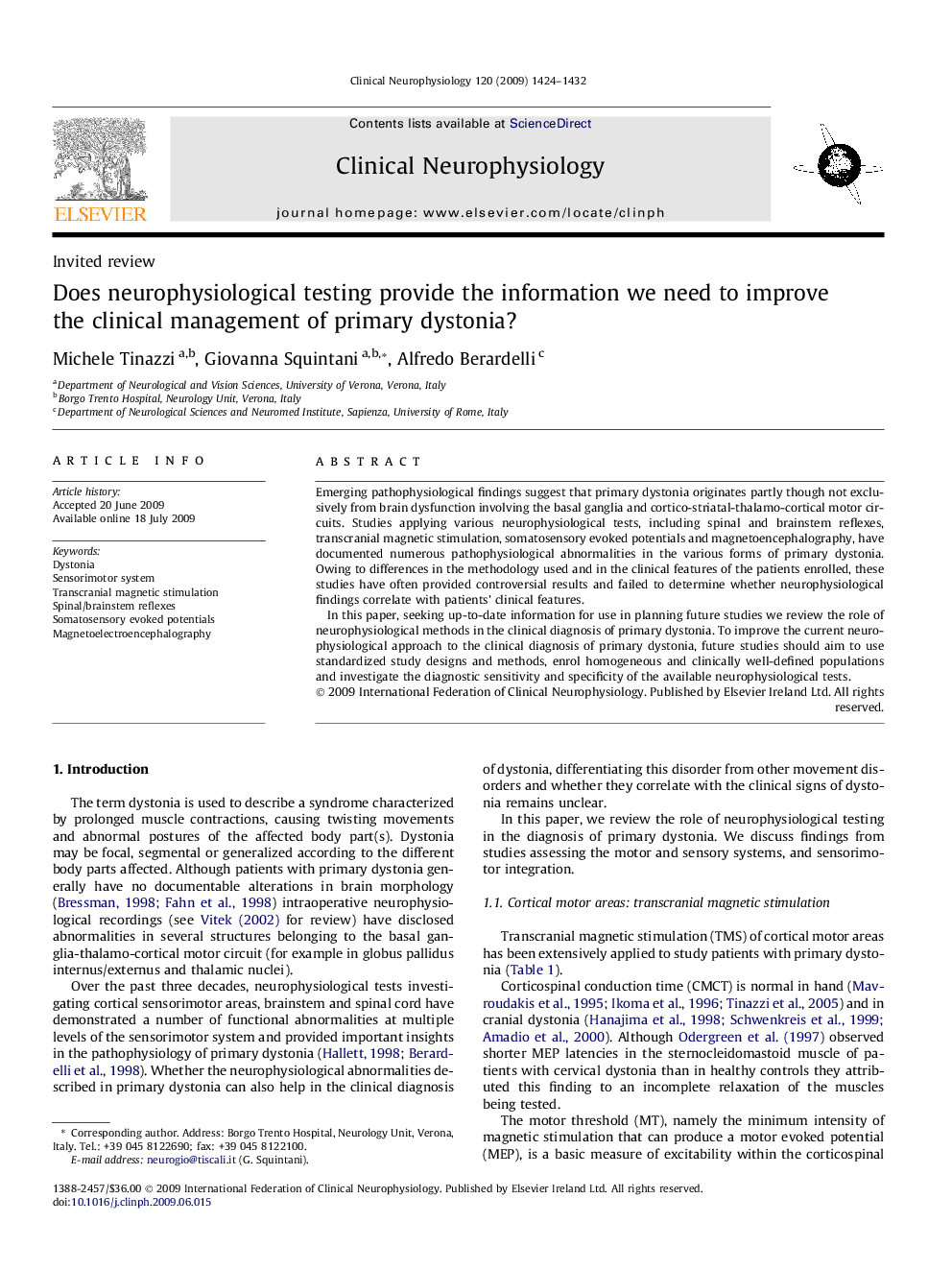| Article ID | Journal | Published Year | Pages | File Type |
|---|---|---|---|---|
| 3046268 | Clinical Neurophysiology | 2009 | 9 Pages |
Emerging pathophysiological findings suggest that primary dystonia originates partly though not exclusively from brain dysfunction involving the basal ganglia and cortico-striatal-thalamo-cortical motor circuits. Studies applying various neurophysiological tests, including spinal and brainstem reflexes, transcranial magnetic stimulation, somatosensory evoked potentials and magnetoencephalography, have documented numerous pathophysiological abnormalities in the various forms of primary dystonia. Owing to differences in the methodology used and in the clinical features of the patients enrolled, these studies have often provided controversial results and failed to determine whether neurophysiological findings correlate with patients’ clinical features.In this paper, seeking up-to-date information for use in planning future studies we review the role of neurophysiological methods in the clinical diagnosis of primary dystonia. To improve the current neurophysiological approach to the clinical diagnosis of primary dystonia, future studies should aim to use standardized study designs and methods, enrol homogeneous and clinically well-defined populations and investigate the diagnostic sensitivity and specificity of the available neurophysiological tests.
